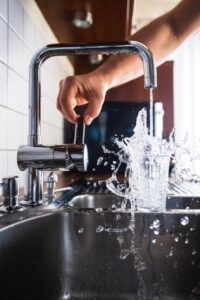
Energy efficiency in buildings has become a big concern these days. Building s are responsible for a great portion of the world’s energy consumption (around 40%).
Unfortunately, a considerable amount of this energy comes from fossil fuels, causing catastrophic environmental issues.
Apart from the role of energy efficiency in reducing environmental issues, it can greatly help you cut your energy bills.
One way to reduce energy consumption in your home is to optimize your plumbing system. There are many things that affect the performance of plumbing systems.
Here are 8 useful tips suggested by R&Z Plumbing, one of the best emergency plumbing services in Toronto, Canada, to increase your plumbing system’s energy efficiency and reduce your energy bills.
Insulate your pipes
This tip might be a bit basic, and most of us are familiar with it. Usually, there is a significant temperature difference between the air and the water you want to use. This difference is a lot more in winters, leading to more energy waste.
Insulation is therefore necessary for your pipes, especially if you’re living in a cold country like Canada.
Here are several best insulation types for your pipes:
- Tubular rubber insulation
- Tubular polyethylene foam
- Fiberglass pipe wrap kits
- Foil and foam insulation
If you’re not sure about the performance of your insulation, try to contact the best local plumbing service provider and get help.
Use low-flow toilets
Traditional toilets are not energy-efficient and waste a significant amount of heat and water. Low-flow toilets can cut 20% of the energy you’re wasting by using the traditional ones.
In spite of common misconceptions, low-flow toilets are as powerful and effective as the traditional models. Standard low-flow toilets available in the market don’t sacrifice performance and power for efficiency.
They just use 1.6 gallons per flush, which is way less than the amount of water traditional toilets waste.
Use solar collectors
Solar energy has recently drawn the attention of energy experts, homeowners, and also policymakers. You can use solar energy in two different ways: photovoltaic panels and water heaters.
Solar collectors, also known as solar water heaters, can absorb energy from sunlight and add it to water.
So it’s a perfect option to add to your plumbing system and reduce the energy you’re using for hot water. If you’re living in a region with good solar radiation, you’d better go for solar energy.
Recently, engineers have tried to combine PV panels with solar collectors to provide heat and power for domestic and commercial use.
Use tankless water heater
If you’re still using tank water heaters, you need to think about changing them. Tankless water heaters have many advantages over traditional ones and can help you reduce your energy bills.
Apart from the benefit of occupying less space, tankless water heaters are more energy-efficient. Also, they provide you with unlimited hot water, despite the traditional ones that only warm a tank.
More importantly, you can use condensing tankless water heaters that are really efficient. A high efficiency condensing water heater provide efficiencies greater than 90% because they reach the higher heating value of natural gas.
In fact, they can condense water vapor in the exhaust gases and recover a significant amount of energy that is wasted in the traditional water heaters.
Convert your toilet to a dual flush one
Traditional flush toilets have only one button that provides you with the full capacity of the toilet. On the contrary, a dual flush toilet lets you save water by providing two options.
They have one extra button for low power flush that can be used for the time you don’t need much water.
The other button provides a full flush, which is similar to the traditional toilets. This conversion is not so expensive but can cut your bills significantly.
Take advantage of low-flow showerheads
Showerheads’ performance is measured by flow (i.e., gallons per minute [gpm]). It’s good to know that the water pressure affects the flow rate and is measured in pounds per square inch (psi).
The greater the water pressure is, the greater the volume of water will be.
The trick to reducing the volume of wasted water without reducing the pressure is low-flow showerheads. They use less water but maintain water pressure.
If you can do this, you will use less water in the same time you spend under the shower and receive the same water pressure needed to rinse the shampoo out of your body and hair.
There are two types of low-flow showerheads. First, aerating showerheads mix air into the water and use less water without reducing the pressure.
Second, non-aerating showerheads use pulses to maintain the flow strong while maintaining a constant temperature.
Drain water heat recovery systems
As mentioned before, heating water requires lots of energy because the specific heat of water is really high.
Unfortunately, a considerable amount of energy is being wasted through drainage systems. Drain water heat recovery systems are a perfect solution for this problem. This system can recover heat from hot water that’s going out through the drain.
This system uses a simple coil that is in contact with the hot drain water, collecting as much heat as possible. Then it will return the heat to your water heater, causing a significant reduction in energy consumption.
As you know, a considerable amount of hot water is used for showers in homes. So that’s a good location for installing a heat recovery system.
Bottom line
Energy bills comprise a significant portion of the living costs of many families. If you want to reduce your costs, the plumbing systems in your apartment is a good start to save energy. The mentioned tips are very useful and easy-to-use. You can DIY if you have enough time. Otherwise, try to call a professional team to do it and convert your plumbing system into a modern, energy-efficient one.











